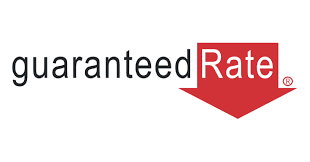A 5/1 ARM rate gives you an initial rate that’s fixed for five years, and then adjusts every year for the rest of the loan’s term.
An adjustable-rate mortgage is a home loan that features an interest rate that changes over time. Most lenders offer ARMs with low initial or “teaser” rates that are fixed for three, five or seven years.
When the teaser-rate period ends, the adjustable-rate repayment period begins. The ARM rate can rise, fall or stay the same based on the margin and index of the ARM program you choose.
| Lender | ARM loan types offered | Where it lends | Lender Review |
|---|---|---|---|
 | 5-year ARMs 7-year ARMs 10-year ARMs | All 50 states & D.C. | Read our review |
 | 5-year ARMs 7-year ARMs 10-year ARMs | All 50 states & D.C. | Read our review |
| 7-year ARMs 10-year ARMs | All 50 states & D.C. | Read our review | |
 | 5-year ARMs 7-year ARMs 10-year ARMs | All 50 states & D.C. | Read our review |
 | 5-year ARMs 7-year ARMs 10-year ARMs | 49 states & D.C. New York excluded | Read our review |
Unlike a conventional mortgage, ARMs have two distinct phases:
Lenders are required to provide ARM borrowers with a Consumer Handbook on Adjustable-Rate Mortgages (CHARM). The booklet provides 13 detailed pages explaining how ARMs work. We’ve condensed the basics below:
| ARM feature | What it is and how it works |
|---|---|
| Initial or teaser rate |
|
| Index |
|
| Margin |
|
| First adjustment cap |
|
| Subsequent adjustment cap |
|
| Lifetime cap |
|
| Adjustment period |
|
When looking up ARM rates and terms, the phases of the loan will always be represented with numbers. Let’s look at a 5/1 ARM as an example:
ARM adjustment periods are typically one year (5/1 ARM) or six months (5/6 ARM). The teaser period can last three, five, seven or even 10 years.
ARM caps are also disclosed with a set of three numbers. For example, a loan with caps of 3/2/5 breaks down as follows:
| Pros | Cons |
|---|---|
| Lower initial rates. The teaser rate for an ARM is typically lower than fixed-rate loans. | The rate could spike after the teaser-rate period ends. If you still have the ARM loan when the adjustment period begins, your rate could increase. |
| Lower monthly payments at first. Low teaser rates translate to lower monthly payments during the first few years of your mortgage. | The payment could become unaffordable. If your income has dropped or you’ve racked up other debt, an ARM payment increase could make it harder to make ends meet. |
| Extra monthly cash can be used to pay down your loan balance. You can use the savings to pay off your loan faster and build equity in your home. Alternatively, you can use the funds for other financial goals, like saving for college or retirement. | The qualifying standards may be more stringent. ARM lenders may require a higher credit score, larger down payment or restrict the amount of equity you can tap. |
An ARM loan makes sense if you need to save money over a short period of time. You should choose an adjustable-rate mortgage if:
You have savings goals you can accomplish before the initial fixed-rate period ends
You plan to sell your home or refinance before the first rate adjustment
You can afford the lifetime maximum payment
It’s best to opt out of an ARM if:
You receive variable income such as commission or self-employment earnings
You live in your “forever” home or don’t plan to sell before the fixed-rate period ends
You can only afford the monthly payment at the teaser rate

Adjustable-rate mortgage options are available for conventional loans, loans backed by the Federal Housing Administration (FHA) and loans guaranteed by the U.S. Department of Veterans Affairs (VA loans).
A few things worth noting about ARMs with each type of loan program:
An interest-only ARM allows borrowers to only pay the interest due on the loan for a set time, usually between three and 10 years. During that time the loan principal isn’t paid down at all, but your monthly payment is lower.
Payment-option ARMs are rare since they were all but outlawed after the 2008 housing crash. An option ARM allows you to choose different monthly payment “options.” The three choices typically include a principal and interest payment, an interest-only payment and a minimum or “limited” payment.
With the limited payment option, you can opt to pay less than the interest accruing on the principal, and add the unpaid interest to the loan balance. In other words: Your loan balance increases instead of shrinking like it does with a regular mortgage.
There are some specific scenarios when it makes sense to refinance your current ARM to a new ARM loan.
Yes, as long as you qualify based on your credit, income, debt and equity. You may want to consider refinancing into a fixed-rate mortgage when your teaser period ends to keep a stable interest rate and payment over the life of the loan.

A 5/1 ARM rate gives you an initial rate that’s fixed for five years, and then adjusts every year for the rest of the loan’s term.
A hybrid ARM is just another name for an ARM loan. It’s considered “hybrid” because it has two payment schedules during the term: A fixed-rate schedule at first, followed by an adjustable payment schedule for the loan’s remaining life.
An ARM loan is best for borrowers that need short-term savings and have a plan to pay off the loan before the teaser-rate period ends. A fixed-rate loan is the best option for a stable monthly payment that remains consistent for the entire loan term.
A teaser rate is just another name for an initial ARM rate.
The interest rate increases could make it difficult for you to make payments. If you can’t afford the higher payments, you could go into mortgage default and the lender could foreclose on your home.